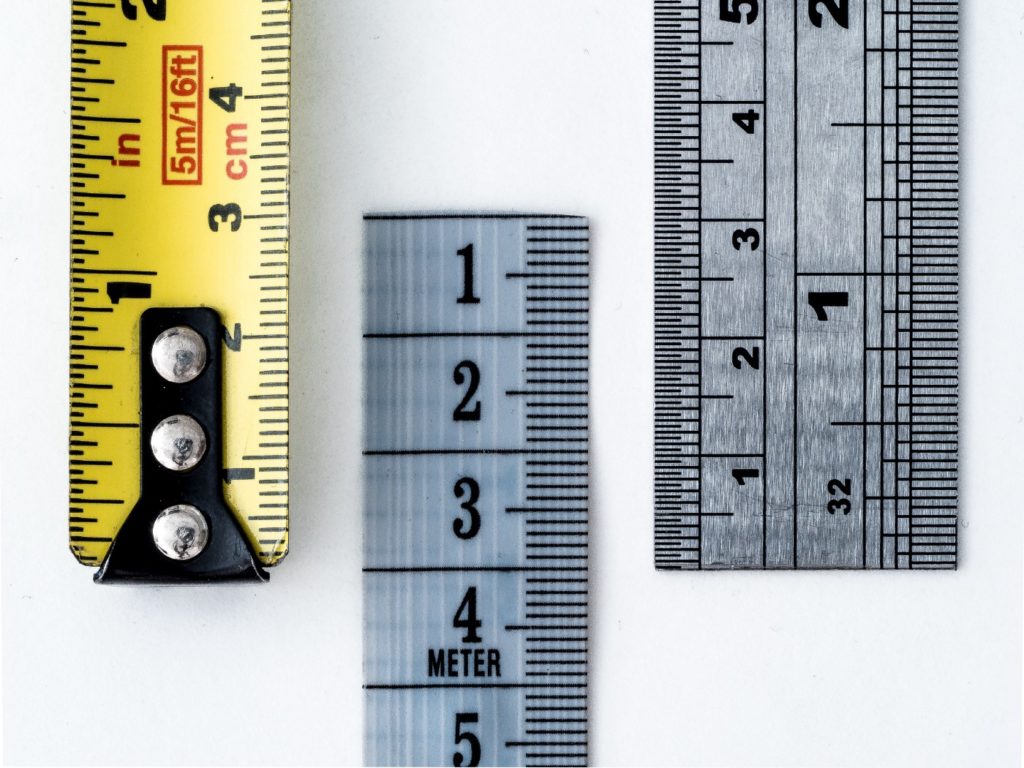The Importance of Taking a Baseline

Sure, I was the debate team geek that won some speaking trophies growing up and have been lucky enough to score a few industry awards in my career. But for a really long time, one of my proudest accomplishments has been losing extra pounds and keeping them off. You know, being a good old-fashioned weight loss success story.
Between 1992–1993, I lost over 50 pounds by eating healthier, exercising most days and drinking lots of water. Just under 5’4, I weighed close to 180 lbs. at my highest, which means I shed nearly one-third of my size during a 15-month process.
Interestingly enough, my initial motivation was not a number on a scale. I was sick and tired of, well, always being sick and tired. My twenty-something self just wanted to feel better physically and emotionally.
My body was a lot healthier after that transformation. A lifelong exercise habit was born, as I equated it as a way to love myself no matter how challenging everything else was.
After about seven years of success, I started sharing my story with publications that wrote about weight loss. The goal was to inspire others to realize if I could do it, the kid always picked last for volleyball whose first word as a baby, no joke, was “cookie,” then they could as well.
There was still a slight edge of fear, year after year, that I would slip back into unhealthy eating habits. But tracking my calories and exercising regularly proved to be the magic bullet. Until it didn’t.
When tried and true is neither.
At age 47, with 20 years under my belt as a “success story,” the tried-and-true methods for weight loss maintenance proved to be neither anymore. I was diagnosed with Crohn’s Disease, an inflammatory bowel disease, and the symptoms were bad. Freaked out by the lack of control over my body, I started overeating sugary treats for comfort.
My emotional eating habit apparently had lain dormant and, activated by sustained stress, was now back full force. It continued even after medication helped me get my symptoms into remission a few years later. By age 50, I felt tired, bloated and overwhelmed. It was time for a reality check. Getting a baseline of my health stats would help me understand where things stood.
I turned to a top-notch private personal training studio, where they measured my body fat. My weight had increased to 142 pounds, with my body fat at 35.5%. Sure, that is a million miles away from where I was back in the early 1990’s. I get that and understand how far I’ve come. But according to this chart on body fat percentage norms from the American Council on Exercise, an acceptable range for women is 25% to 31%; anything at 32% and over is obese. I needed that honest baseline to move forward.
Turning to strength training with cardio intervals three days a week, along with three additional days of cardiovascular exercise most weeks, I lowered my body fat to 26.3% and weight to 134 lbs by February 2019. My lean muscle mass had increased from 91 pounds to 99.1 lbs. The only problem was that I still relied on meticulously counting calories and exercise to keep things in check.
I constantly thought about what I ate and was going to eat, obsessively checking into a tracking app like a gambler fixated on a Vegas jackpot machine. That behavior caught me up in a cycle of beating myself up on higher calorie days, even when my body was hungry and truly needed that food. Relentless negative self judgement was not sustainable, especially as I place a high value on well-being in most parts of my life.
A new approach.
I kept exercising because it made me feel good. But I struggled when it came to food. Being stuck at home during the pandemic only made it worse. Especially when I went through a phase of regularly baking “healthy” treats, scarfing down bags of chocolate chips before they could be added to the recipes. Kind of defeats the purpose, right? Most of the clothes in my closet were getting tight and it was frustrating.
Then a few months ago, I decided to try a new approach. Did a lot of research on daily Intermittent Fasting and have adopted that practice, averaging 16–18 hours of overnight fasting each day before breaking it with lunch and then starting again after dinner. Last week, I started to clean up what I was eating, focusing more on food quality and quantity during my daily eating windows. Instead of tracking calories, I found an app that lets me take a photo of what I am eating and make notes on my mood.
It all feels right. Realizing I am on the cusp of making a positive, lasting change, I knew it was time to take an honest baseline. Even if the results were not going to be as stellar as the last check-in nearly two years ago.
Went back to the fitness studio this morning and they measured my body fat. I came in at 142 pounds, with my body fat at 32%. My lean muscle mass had decreased to 96 lbs. But considering many people have complained about gaining the COVID-19 pounds, it was fine by me. There was no personal beat-down. If anything, having this clear starting point is incredibly motivating. Plus I have committed to measuring my body fat every four weeks moving forward to promote continuous progress. Taking that baseline officially launched this next phase of my wellness journey.
Essential for lasting change.
If you really want to change, you need to establish a baseline. Be honest about where you stand. I am writing this from the perspective of physical health, but the same is true for any part of your life.
Want to gain more financial freedom and security? Then bite the bullet and calculate all of the debt you have, including credit cards, student loans, car payments and more. Looking for a fulfilling romantic relationship? Journal about what worked and didn’t from your past partners, and how you need to work on yourself, to identify what your heart truly wants.
Establishing where you are today helps you clearly map out the steps needed to achieve your goals and dreams. And whenever you need an extra dose of motivation, you can always look back and see all of the progress that’s been made.
